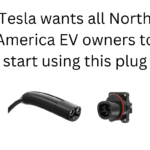A few years ago the Fuel Cell was presented as the bright future. Remember all the advertising about the Hydrogen Economy and how it was going to become big? While the Hydrogen Economy and the Fuel Cell Vehicles that were envisioned have so far fizzled, while battery-electric cars are taking off, there is plenty of evidence that car makers and policy makers are still pushing the hydrogen stuff forward.
I just came across one piece of evidence, a document titled California Hydrogen Station Development: Status, Challenges and Lessons Learned![]() , published in October 2013 by the California Energy Commission for presentation to the California Fuel Cell Partnership. As the title implies this is a status update, and the status for fuel cell infrastructure development is bleak.
, published in October 2013 by the California Energy Commission for presentation to the California Fuel Cell Partnership. As the title implies this is a status update, and the status for fuel cell infrastructure development is bleak.
Note that California Gov. Jerry Brown just signed a package of laws supporting electric vehicle and zero emission vehicle deployment in California, and he also just signed some pacts with other states that they’ll also work hard on this area. Among those laws is AB 8![]() , that allocates $2 billion for “Alternative fuel and vehicle technologies: funding programs” and that this includes several provisions pushing for hydrogen fuel cell refueling infrastructure.
, that allocates $2 billion for “Alternative fuel and vehicle technologies: funding programs” and that this includes several provisions pushing for hydrogen fuel cell refueling infrastructure.
With that in mind, what lessons have been learned from hydrogen refueling deployment in California?
These stations are expensive and slow to develop and build. From figures in the slide deck, each station costs $2 million, and takes up to 2 years to build.
Compare that to battery electric vehicles – fast charging station installation costs a small fraction of that, and can be rapidly built from equipment that’s available from several vendors.
Another issue is that several localities have simply refused to allow hydrogen refueling stations inside their jurisdiction. The document doesn’t describe the reasons for refusal, except it says that San Francisco International Airport refused for “liability concerns.” Hmm.. a major airport like SFO would be a great place for fuel cell powered shuttle buses, however I’d have preferred they extend the Air Bart line over to the long term parking rather than keep their fleet of shuttle buses going.
Anyway, “liability concerns” has me thinking that the explosion at Alameda County’s fuel cell refueling site (in an AC Transit yard in Emoryville IIRC – described in the slide deck as “Linde valve incident at AC Transit”) probably caused some concerns.
Ergo – hydrogen refueling infrastructure is expensive, slow to build, and there are “liability concerns.” And, tell me again why we want to keep funding Fuel Cells?
The Fuel Cell side of the Zero Emission Vehicle picture has a huge disadvantage, eh?
- Highway design could decrease death and injury risk, if “we” chose smarter designs - March 28, 2015
- GM really did trademark “range anxiety”, only later to abandon that mark - March 25, 2015
- US Government releases new regulations on hydraulic fracturing, that some call “toothless” - March 20, 2015
- Tesla Motors magic pill to solve range anxiety doesn’t quite instill range confidence - March 19, 2015
- Update on Galena IL oil train – 21 cars involved, which were the supposedly safer CP1232 design - March 7, 2015
- Another oil bomb train – why are they shipping crude oil by train? – Symptoms of fossil fuel addiction - March 6, 2015
- Chevron relinquishes fracking in Romania, as part of broader pull-out from Eastern European fracking operations - February 22, 2015
- Answer anti- electric car articles with truth and pride – truth outshines all distortions - February 19, 2015
- Apple taking big risk on developing a car? Please, Apple, don’t go there! - February 16, 2015
- Toyota, Nissan, Honda working on Japanese fuel cell infrastructure for Japanese government - February 12, 2015


















Pingback: Northeast US has unrealistic fuel cell EV plans for 2025 | The Long Tail Pipe